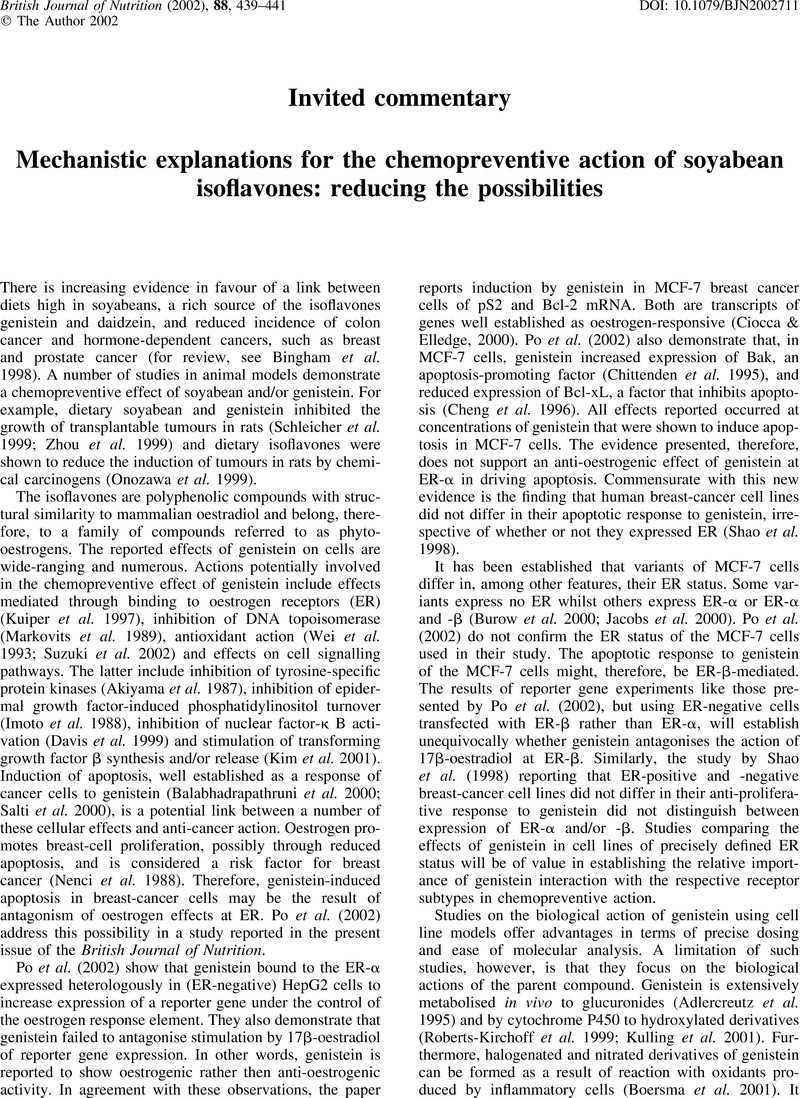Crossref Citations
This article has been cited by the following publications. This list is generated based on data provided by Crossref.
Bruce, Bonnie
Messina, Mark
and
Spiller, Gene A.
2003.
Isoflavone Supplements Do Not Affect Thyroid Function in Iodine-Replete Postmenopausal Women.
Journal of Medicinal Food,
Vol. 6,
Issue. 4,
p.
309.
Maxwell, Carl A.
Restrepo-Hartwig, Maria A.
Hession, Aideen O.
and
McGonigle, Brian
2004.
Secondary Metabolism in Model Systems.
Vol. 38,
Issue. ,
p.
153.
Atherton, Kathryn M.
Mutch, Elaine
and
Ford, Dianne
2006.
Metabolism of the soyabean isoflavone daidzein by CYP1A2 and the extra-hepatic CYPs 1A1 and 1B1 affects biological activity.
Biochemical Pharmacology,
Vol. 72,
Issue. 5,
p.
624.
Díaz-Batalla, Luis
Widholm, Jack M.
Fahey,, George C.
Castaño-Tostado, Eduardo
and
Paredes-López, Octavio
2006.
Chemical Components with Health Implications in Wild and Cultivated Mexican Common Bean Seeds (Phaseolus vulgarisL.).
Journal of Agricultural and Food Chemistry,
Vol. 54,
Issue. 6,
p.
2045.
Maskarinec, Gertraud
Oum, Robert
Chaptman, Ann K.
and
Ognjanovic, Simona
2008.
Inflammatory markers in a randomised soya intervention among men.
British Journal of Nutrition,
Vol. 101,
Issue. 12,
p.
1740.
Maskarinec, Gertraud
Verheus, Martijn
and
A. Tice, Jeffrey
2010.
Epidemiologic Studies of Isoflavones & Mammographic Density.
Nutrients,
Vol. 2,
Issue. 1,
p.
35.
Sen, Cherisse
Morimoto, Yukiko
Heak, Sreang
Cooney, Robert V.
Franke, Adrian A.
and
Maskarinec, Gertraud
2012.
Soy foods and urinary isoprostanes: Results from a randomized study in premenopausal women.
Food & Function,
Vol. 3,
Issue. 5,
p.
517.
Motonaga, Masumi
Watanabe, Hiromitsu
Tayama, Yoshitaka
Shimizu, Ryo
Sanoh, Seigo
Kotake, Yaichiro
Kitamura, Shigeyuki
Ohta, Shigeru
and
Sugihara, Kazumi
2021.
Comparison of the Components of Three Types of Miso (Fermented Soybean Paste) by <sup>1</sup>H NMR Metabolomic Analysis.
BPB Reports,
Vol. 4,
Issue. 5,
p.
148.



